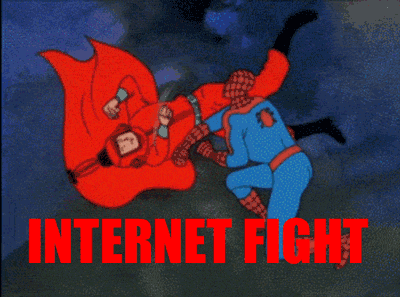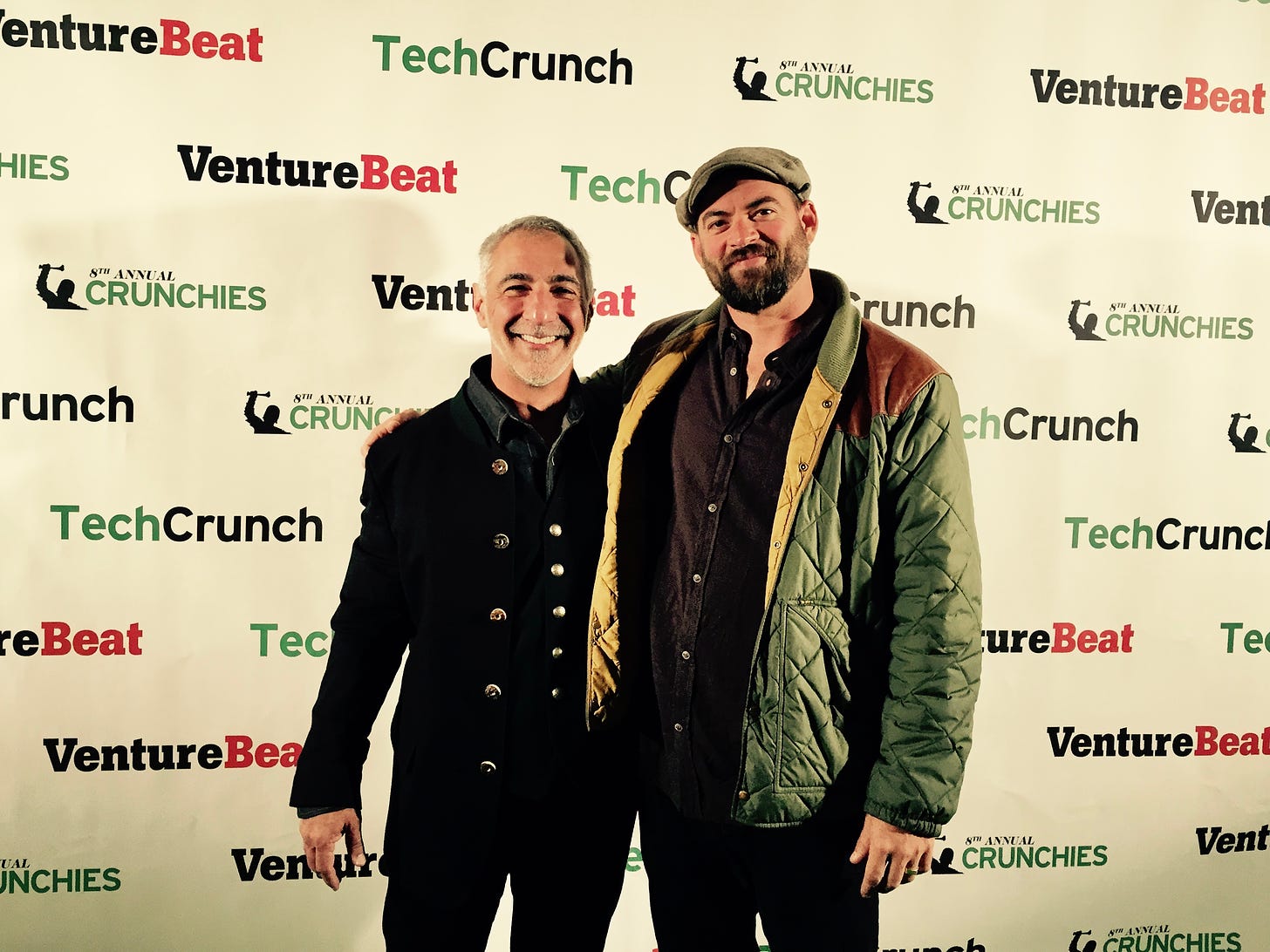The Price of Our Attention
In this story, we learn how the Attention Economy works and why most of the major players are so desperate to harvest our privacy. What we say and where we go is who we are.📍
In 2012, Facebook paid one billion dollars for a company with zero revenue, no assets, and just 13 employees. Old school investors accustomed to acquiring companies for multiples of revenue or book value were shocked. Facebook purchased Instagram for $55M dollars per employee, which is better “human capital efficiency” than the LA Lakers and the Dallas Cowboys (who also get paid to harvest human attention). So what exactly was Facebook buying?
Engagement.
Engagement refers to the level of interaction between a computer system and its Target Audience. Engagement describes how much human attention is harvested by a software interface. The most common measurement of engagement is MAU, which stands for Monthly Active Uniques. If 5 different people visit a website 500 times in a month, the website’s MAU is 5.
Private equity valuations for software companies are more highly correlated with MAU than revenue because once software “habituates” our human attention, there are plenty of ways to “tax it”. After Facebook acquired Instagram, they simply “plug-and-played” their advertising engine into the Instagram newsfeed to dramatically increase their “total inventory”. Facebook’s Total Inventory is the count and quality of human brains they can sell to the highest advertising bidder.
Instagram had 50M MAU when Facebook acquired them in 2012. Just four years later, Instagram had 500M MAU. What other kinds of businesses can handle that many new customers in just four years? Today, 2.35 billion people use Instagram every month, which is 47.84% of all smartphone users worldwide. That’s a lot of inventory.
Here are 78 more eye-popping Instagram engagement metrics:
Human attention is much more “liquid” than other forms of capital, so it’s fascinating to watch it ebb and flow over time. Here is a video showing the most popular websites in the world month-by-month since the beginning of the Internet. You will see the rise and fall of AOL, Yahoo, and several other search engines before Google. You’ll see Amazon hang around forever. Eventually you’ll see Facebook rocket to the top with Instagram in tow. By the end of the video, you’ll see two different Porn sites that are bigger than Netflix. (9 mins)
Engagement Metrics
User Experience (UX) Designers are the researchers, psychologists, and artists responsible for the way software is presented to humans. UX designers need to measure everything if they want to perpetually increase their engagement. Every tap, touch, and swipe within an app or website is collected to create an Engagement Funnel for the UX designers to experiment on. An engagement funnel is the series of screens or pages that a user follows along their Customer Journey. Each screen will have a Bounce Rate that shows the percentage of users that abandoned their Session from that particular screen. Don’t worry, you don’t need to remember any of these definitions.
UX designers track Likes, Clicks, Impressions, Shares, Comments, and Scroll-speed. Generally, the slower you scroll past content in your feed, the more interesting it is to you. From the apps on our phones, UX designers can even see heat maps of exactly where our big, fat fingers tap their tiny little buttons. Here is an example from a UX tool called Inapptics.
The most important action that software designers want us to take is creating new content. For example, when we create a new playlist in Spotify, it becomes that much more difficult for us to switch to Apple Music later. That’s why Instagram makes it so easy for us to leave one-tap Emoji comments everywhere. Comments are new content. When you tap 🔥, their algorithm not only adds that comment to your friend’s post, it also adds an alert about your new comment in their alerts tab. Then everyone who has previously commented or liked that post will also get an alert, and maybe a push notification, that the post has been updated.
Advertising Metrics
There is an entirely different set of audience engagement metrics for Advertisers. Advertisers don’t care how easy the software is to use. Advertisers don’t care about the bounce rates. Advertisers don’t even care if users were tricked into each session by clickbait or fake news because the most important metric for advertisers is Reach. Reach is the number of brains who consumed their advertising content.
Technically, that’s Actual Reach. There’s another metric, called Anticipated Reach, which is the total possible audience that could consume their content. So if you divide Actual Reach / Anticipated Reach, you will get a Reach %.
The reason that should matter to you is because all of your posts on Instagram compete against their advertisers. The people reading Instagram only have so much time in a day to look at photos of other people’s best fake moments. So Instagram can’t afford to show all of your photos to all of your followers. For example, let’s say you have 1000 friends on Facebook and 1000 followers on Instagram. When you post a photo of your dog on both platforms, how many people will see it?
The average Organic Reach on Instagram is just 9.34%, which means your dog photo only appears in the Instagram newsfeed of 93 of your 1000 followers. If you receive 50 likes for your dog photo, that means more than half the people who saw it, liked it. 😳
The average Organic Reach on Facebook is worse—it’s only 4.32%. That means your dog photo only appears in the newsfeed of 43 of your 1000 friends. If you combine 93 and 43 to get an Actual Reach of 136 people, technically that is artificially inflated by the number of friends who follow you on both platforms.
Organic Reach means unpaid. To have more than 9% of your Instagram followers see your posts, you need to pay Emperor Zuckerberg. That goes for celebrities too. During my research a few years ago, when Matthew McConaughey had 4.5 million followers, his video view counts were only around 400,000. But any of his posts that pushed his whiskey, his book, or other endorsed products usually got between 1.5M to 2M views. So Paid Reach can dramatically increase your own Reach %, but you can only reach about half of your own audience. I can’t imagine what Christiano Ronaldo has to pay to talk to more than 9% of his 600M Instagram followers.💰
Paid Reach is a big reason why so many influencers are moving away from social media to platforms that let them Own their Audience, instead of just Renting their Audience. Some of the most popular services for that are OnlyFans, Substack, and Twitch. Substack delivers your content directly to your audience's email so that you don’t have to pay to talk to people who already said they want to hear from you. Twitch allows influencers and gamers to livestream their lives directly to their audience. OnlyFans also does that too, but for work-from-home strippers.
Price Per Brain Per Hour
To get a better idea of what each brain is worth, let’s do some “cocktail napkin math” from Meta’s earnings data.
Meta earned $116 billion dollars of ad revenue in 2022. If we divide their total revenue by their average MAU (2.7 billion people), they made about $42 per brain that year. Dividing the revenue per brain into months gives us $3.50 per brain per month. If we divide that by the average time spent on Facebook and Instagram each month (14 hours), we get $0.25 per brain per hour. Meta has an incredible 78% gross profit margin because products made entirely out of electrons virtually no inventory costs and free shipping worldwide.
Meta doesn't share any of that revenue with the people who generate the most attention like YouTube does. So Meta keeps 100% of the money from all their advertisers and keeps 95.7% of the reach from their users. And Mark Zuckerberg simultaneously whines about having to pay 30% to the Apple App Store. 🤑
There are several ways that digital advertisers are billed for our attention:
The most simple way to pay is per impression. Impressions are so cheap that they are billed in batches of 1000, known as an eCPM (Cost per Milli). The average eCPM is between $2 and $10 depending on the country.
Advertisers can pay CPC (Cost Per Click), which verifies that a user followed a link provided by the advertiser. These are much more expensive, somewhere between $0.50 and $5 each.
Advertisers can pay CPA (Cost Per Action), which means advertisers only pay if the user follows a link and then performs a desired action on their platform. CPA is why giveaways from influencers require you to follow steps from their sponsors to be eligible.
CPI (Cost Per Install) is even more expensive because the user has to actually install an app on their phone. This is a very difficult conversion because App Stores have crazy high bounce rates. The average CPI is more than $5 per install in North America. That’s $5000 per milli.
The last billing method that’s notable is called CPCV (Cost Per Completed View). CPCV is how advertisers get charged for video ads.
Before the Internet everyone in America was already watching television, but after the Internet the television is watching back. Connected TV services like Amazon Fire, Apple TV, Chromecast, and Roku not only measure what we watch, but when we watch, when we pause, the trailers we consider, and which descriptions we read. The value of this information is reflected in the average prices of the human attention sold on Connected TV. Here are the normalized average prices per thousand for a 30 second spot on various streaming platforms:
Cable TV: $20
YouTube: $10
Hulu: $30
Connected TV: $35-65
Amazingly, it’s worth almost 100% more to deploy the same content on Connected TV than Cable TV. The targeting is that much better and the viewers usually can’t fast forward through commercials. 95% of Connected TV ads are viewed completely.
All of these revenue stats are amazing, but how many banner ads or video ads do you actually pay attention to? There’s no double entry accounting for this process, so digital advertisers have to trust the impression counts provided by Google and Meta. But Google and Meta don’t care if you watch the advertisements. Meta can hardly distinguish which computers are operated by humans and which computers are operated by bots.
Fighting For Revenue
The insatiable hunger for human attention creates some perverse incentives for all social media, not just Meta.
Recall that the organic reach on Facebook is just 5%, so that means their EdgeRank Algorithm has to guess which 5% of our friends’ posts will be the most important to us. It doesn’t calculate this at night while we’re sleeping. Right when we scroll a new post onto our screen, the Facebook and Instagram apps “lazy load” new content. Lazy loading means it waits to the absolute last second before populating the data. That way the Meta EdgeRank Algorithm has the highest optionality at the precise moment when our content is consumed.
Let’s say EdgeRank scans the remaining 95% of our potential content (that we haven’t seen yet) and notices that one of the posts has 10 times as many comments as every other post. Doesn’t it make sense that we would want to see that post next? Those comments were created by people most likely to be our friends. Those comments are likely to be unique in all of human history. Once any sentence has more than 9 words, it is more likely than chance to be unique in all of human history. If you didn’t believe me, try searching the Internet for the previous sentence.
@ChatGPT: Can you search the internet to see if this sentence has ever been said, “Once any sentence has more than 9 words, it is more likely than chance to be unique in all of human history.”
ChatGPT: The sentence "Once any sentence has more than 9 words, it is more likely than chance to be unique in all of human history" appears not to have been said before, as no direct matches were found in online sources. The concept touches on the vast potential for unique combinations of words and the likelihood of longer sentences being distinctive due to the exponential increase in possible word arrangements. This idea aligns with principles in combinatorial linguistics and information theory but doesn't seem to be a widely quoted or established statement in those exact words.
If a post has ten times the comments of every other post and those comments are likely to be unique in all of human history, don’t you want to see what has your friends so fired up?
Of course you do, we all do.
Now, here is a list of possible emotions from Plutchik’s Wheel of Emotion in Psychology.
If any post has 10 times the comments of every other post, which emotion do you think those people were likely feeling when they typed them out?
Joy
Trust
Fear
Surprise
Sadness
Disgust
Anger
Anticipation
Do you think all of those people are discussing how much they trust each other?
Do you think all those people are opening up about how much fear and sadness they share?
No, anger and disgust are the emotions that put the “pep in our step”. Anger moves us. So when the Facebook EdgeRank algorithm looks to grow its 16 hours of attention per brain per month, which post is it likely to choose?
Social media is simply making us more of who we already are. If humans naturally avoided contentious material and only consumed joyful content, then that’s what the social media algorithms would prioritize out of corporate greed. But that’s not who we are. When is the last time you watched a Hollywood movie that didn’t have a fight at the center of the story?
See for yourself. Here are IMDB’s 100 most popular movies right now. How many of them have two sides fighting over something?
How many of those movies don’t have a gun or a murder? Here are the 100 most popular television shows. How many of them have two sides fighting over something?
@americans: Social media is causing our country to experience its Second Civil War. The Second Civil War may be a “cold” land war, but it’s a “nuclear hot” attention war. Instead of bullets and cannons, the Second Civil War is being fought with memes, fake news, and trolling comments.
The net effect of social media cherry-picking the “best performing” content is that we all live inside our own individual realities. Everyone got pushed away from the middle because the middle is bad for business. Of course we aren’t going to agree with the other side if we don’t all share the same facts. Half our country believes the 2020 election was stolen, while the other half knows that Fox News, Donald Trump, and Tucker Carlson were lying to everyone. 🤥
Keeping our democracy together was challenging before the Internet, so I really don’t know if America will survive social media. For more information about how social media shapes our individual realities, check out the documentary, The Social Dilemma on Netflix.
And while you’re annoyed at social media, remember that quantum mechanics is creating an individual reality for you right now too. And that reality is also heavily influenced by your own beliefs. 🫠
@republicans: George Washington may have never told a lie, but Donald Trump may have never told a truth. You know how people use phrases like “honestly” and “to be honest with you” when they are lying? Donald Trump named his personal social network Truth Social. That guy lies so much, he lies too much for regular social media, which is full of lies. Trump is making the Republican party look like fools. Actually, he’s making our entire country look like fools. 🇺🇸
@youngpeople: Listen to your girl Tay-Tay. These aren’t your dad’s republicans, they aren’t Abraham Lincoln’s republicans, they are Donald Trump’s republicans. They are vitriolic, vindictive, and…
@ChatGPT: which words that start with v mean “sore losers”?
ChatGPT: A word that starts with "V" and means sore losers is "vexatious." While it may not specifically refer to sore losers in every context, "vexatious" describes individuals who tend to be difficult, annoying, or overly litigious when faced with defeat or unfavorable outcomes. They may exhibit a persistent and unreasonable resentment or refusal to accept defeat gracefully.
The Stock Markets for Human Attention
Let’s get back to Meta’s revenue.
For Meta to generate their $3.50 of revenue per brain per month, they need to occasionally “lazy load” a Sponsored Post into our newsfeeds. The percentage of sponsored posts has crept up over time and it’s currently 21% of all posts. The reason I explained the lazy load earlier is because what happens in the lazy load of a sponsored post will blow your mind. Instead of asking the EdgeRank Algorithm to guess which potential post is most likely to generate an interaction from us, our newsfeeds simply ask a Real-Time Bidding Engine (RTB) for content from the highest bidder for our attention.
Billions and billions of seconds of human attention are auctioned every day, just like stocks, using Real-Time Bidding Engines. The stock markets for human attention don’t keep Wall Street banker hours either—they trade all day and all night. The moment we scroll a sponsored post into our “ViewPort View”, the entire auction takes place in milliseconds. The RTB engines of Google, Meta, and Amazon currently earn 50% of all the digital advertising dollars on Earth.
To help their customers (rich corporations) decide which brains to buy, RTB engines need to know as much as they can about the brains they are selling. The reason Facebook is free because we inform them of our friends, our likes, and our relationship status. Google is free because we tell them what we are interested in finding on the Internet.
All those things are important, but the most important datapoint when bidding for any brain is our Location History. For example, my hometown of Austin has several major grocery stores:
Central Market: $
Whole Foods:
HEB: $$$
Randall’s: $$
Fiesta: $
If my phone goes to Whole Foods every week instead of Fiesta, that implies a lot about my purchasing behavior. Where my phone sleeps at night reveals what kind of house I can afford. If my phone goes to a church on Sunday, that means something about me as a person. If my phone goes to a little league baseball field or skiing in the winter, those locations all mean something different about me.
Here is my Google Timeline from January 2023.
What can you know about me from just 20 dots that include: Juiceland, Cafe Medici Coffee, Veracruz Tacos, Homeslice Pizza, Swedish Hill Bakery, Zilker Park, Whole Foods, AMC Movie Theater, Izumi Sushi, Acton Academy West, Austin Country Club, Lowes Home Improvement, PGA Superstore, Scottish Rite Dormitory at University of Texas, and the airport? #boushie
Google knows which doctors I visit, the friends I hang out with, and everywhere else I’ve ever been. Here’s my Google Timeline since I started using Google Maps. Tap on the screenshot to view your own.
Location data isn’t just harvested by our phones, it’s also harvested by individual apps installed on our phones. If you have an iPhone, tap Settings -> Privacy and Security -> Location Services and then scroll down through that list. A gray arrow beside an app means it has sampled your location in the past 24 hours. A purple arrow means that app is using your location right now. Previous versions of iOS had a hidden map in Settings -> Privacy -> Location Services -> System Services -> Frequent Locations that would show you every “GPS dot” of your entire life, and how many minutes you were there each day. I loved that map as a data researcher.
@entrepreneurs: I started my first location data company 15 years ago, shortly after Steve Jobs put a GPS antenna in the iPhone 3GS. I used a dev app to record everywhere my phone went all day, every day. If my phone was stationary for more than 10 minutes I used the Google Places API to pull in all the merchants that were “in view” from that location. My plan was to make some kind of “CPC for the real world” where merchants could give extremely personalized discounts to nearby foot traffic to steal market share from Valpak (which still targets potential customers by entire zip codes).
After a few months of collecting data, I had my entire life loaded into a SQL Server database. One day, I was curiously running queries on myself and noticed the time it took for me to drive from my exit on the freeway to my house was 6 mins 13 secs. When I summed it by how many times I drove that stretch each year, I was spending 43 hours per year just driving to the freeway. That’s an entire workweek. I walked downstairs and said, “Honey, we gotta move”. 🚛
Our startup couldn’t get marketing agencies interested in location data back in 2011, so we pivoted the location tracker to create a parenting app called MamaBear. MamaBear was a Best Innovation Finalist at the 2015 TechCrunch “Crunchie” Awards, but we failed to secure funding despite the fact that 20% of all new users became power users with 7+ app sessions per day. We were the third most used app on those phones behind email and Facebook.
Building the right cap table is even more difficult than building the right team, which is more difficult than building the right product, which is more difficult than building the right customer base.
To learn more about privacy and location data, I attended the RSA Security Conference in 2015. One of the many events there was a panel discussion that included the Chief Privacy Officer of Facebook, Chief Privacy Counsel of Google, Lead Architect from Microsoft, and some guy from Mozilla. They spoke to about 1000 conference attendees in the Moscone Center in San Francisco.
When the time came for audience Q&A, I raced to be first at the microphone. I said, “This question is for Keith Enright from Google. Given what Google is doing with all our web data, should we expect you guys to also harvest and monetize all our location data from google maps?” His response (glibly delivered) was, “If you don’t think we’re going to treat your location data like we treat all your web data, then you need to elevate your digital literacy”.
This is the guy Google chose to protect our privacy.
Digital literacy elevated. 😡Eight years later, when I checked my location data permissions to write this story, I noticed Google Keep had sampled my location in the past 24 hours despite the fact that I haven’t used that app in 3 years. Google Keep is a note taking app. I didn’t even remember I had Google Keep installed. But here’s the rub. The reason my YouTube and Google News recommendations are so perfectly dialed into my interests right now is because Google snoops into every corner of my life. Now I kinda want Google to know everything about me because I want their recommendation engines to be that much more informed.
Digital literacy elevated. 🙏A few years ago, Google acquired Nest thermostats just so they have a good reason to listen to all the conversations in our homes. Google’s “Head of Devices” actually recommends that we warn every houseguest that Google machines are recording their conversations. That’s preposterous. Here’s a link to the article about it in BusinessInsider if you want to learn more.
Today, Google and Apple don’t even need GPS to know where we are all the time. Google Maps now includes a feature called StreetView, where you can see the actual street view of almost every location in the civilized world. It’s really useful. To get all those photos, Google sent cars all around the world with cameras on top. Google eventually got sued all the way to the Supreme Court though, because those cars were also equipped with powerful Wi-Fi Sniffers.
Google and Apple have constructed their own private maps of all the world’s “Wi-Fi bubbles” that get created around our houses and apartments. Even when our phones don’t connect to those foreign Wi-Fi networks, the fact that our phones can see them triangulates our position on Earth. So instead of our phones asking satellites in outer space where we are, our phones simply ask the manufacturers where we are based on the Wi-Fi networks that are “in view”.
Wi-Fi networks constantly reveal where we are, but they are nowhere near the accuracy of Bluetooth Beacons. Think about how fast your phone automatically connects to your car when you get in it. That’s because several times per second your phone is invisibly asking the entire world, “Hey do I know any Bluetooth devices in range?” Bluetooth Beacons listen for this invisible request and they don’t even need to respond. Walmart, Home Depot, CVS, and pretty much every other big box retailer have Bluetooth Beacons every few meters along every aisle. The Bluetooth Beacons compare their signal strength to each other to triangulate where you are within a few feet. This allows Home Depot to know how fast or slow you walked past the DeWalt drills, just like Facebook knows how fast or slow you scroll past each of your friends.
Your location history, your identity, your job title, your income, your web history, what you say in your home, and everything else about you is Context for Real-Time Bidding Auctions. Remember, for RTB engines to get the most money for your brain, the advertising networks need to offer their bidders as much of this context as they can, which has drawn the criticism of digital privacy regulators in the EU. The Irish Council for Civil Liberties published a 12-slide pitch deck with some truly frightening RTB statistics. The headline of one slide reads:
Biggest data breach ever. Repeated daily.
Here are a few quotes from their “Key Insights” slide:
RTB is the biggest data breach ever recorded. It tracks and shares what people view online and their real-world location 294 billion times in the U.S. and 197 billion times in Europe every day.
On average, a person in the U.S. has their online activity and location exposed 747 times every day by the RTB industry.
In Europe, RTB exposes people’s data 376 times a day.
Europeans and U.S. Internet users’ private data is sent to firms across the globe, including to Russia and China, without any means of controlling what is then done with the data. The RTB industry generated $117+ billion in the U.S. & Europe in 2021
Here is the slide deck:
Shockingly, the authors of this study consider their estimates to be conservative. In the fine print they write, “The industry figures on which we rely do not include Facebook or Amazon RTB broadcasts.”
TechCrunch has a good article about this Irish Council for Civil Liberties report called, Report spotlights vast scale of adtech’s ‘biggest data breach’. It reads,
Per the report, Google, the biggest player in the RTB system, allows 4,698 companies to receive RTB data about people in the U.S., while Microsoft — which ramped up its involvement in RTB in December last year when it bought adtech firm Xandr from AT&T — says it may send data to 1,647 companies. That too is likely just the tip of the iceberg since RTB data is broadcast across the Internet — meaning it’s ripe for interception and exploitation by non-officially listed RTB ‘partners’, such as data brokers whose businesses involve people farming by compiling dossiers of data to reidentify and profile individual web users for profit, using info like device IDs, device fingerprinting, location etc to link web activity to a named individual, for example.
I have seen several demos from Data Brokers and they are as scary as you can imagine. Data brokers, “whose businesses involve people farming”, don’t just buy data from Google and the phone company. They buy data from all the apps on your phone. They also buy data from your grocery story and your pharmacy because whenever you use your phone number for discounts, that assigns and releases your data for sale to data brokers. Data brokers even know who sends you physical mail because they can buy that data from Pitney Bowes.
Even Meta buys data from Pitney Bowes because Meta buys data from everybody. For example, there are 25 million women who use the Flo Period and Ovulation Tracker app each month. Meta pays Flo to perpetually monitor the ovulation cycles of Facebook and Instagram users. All of that “context” helps increase the Click-Thru Rates of their RTB engines. Here is the write up about it in the Wall Street Journal.
My favorite demo from a data broker is from a company called GroundTruth. I was looking to target phones that go in and out of apartment buildings for research into “in real life” social networks. During the demo, the sales guy started with a map of the United States and then zoomed in to the Pentagon. He used his mouse to trace a blue pentagon around the Pentagon building, and then tapped “Search”. Over the next two minutes, their location sniffing database found over 30,000 phones that had been “location sampled” inside the Pentagon within the prior month. The sales guy randomly scrolled down through this enormous list of phones and randomly clicked on a single row. The map immediately changed to a residential neighborhood to show where that phone was last seen—which seemed to be that person’s home.
So how can 30,000 of the most security-minded people in the world not know that they are broadcasting their locations all over the internet? Because it’s the “Biggest data breach ever. Repeatedly daily.” All it takes is a Pentagon employee using their phone to read one free news article with one RTB advertisement to create that “digital breadcrumb”.
Continue reading…
When Labor and Capital Are Free
In this story, we speculate about the future of the Attention Economy as labor and capital continue to trend towards free. 📉
Table of Contents
The Computer Science of Everything
God isn’t some old, white man with magical powers. God is a quantum computer scientist with super advanced technologies.
Huge Thanks 🙏
to all our sponsors. Your support helped us reach new academics, scholars, and scientists all around the world through social media.
Caitlin Knauss
Worth Denison
Alana Aviel
Anonymous
Jeremy Wells
Ronnie Blanton
Tarrytown Bible study
If this content was helpful to you, please consider investing in our mission to spread the Good News of Jesus Christ. “Love your neighbor as yourself” might be the only reason that artificial super intelligence doesn’t kill us all.
Donate by credit card or bank transfer:
Donate Bitcoin to this address: bc1qsn9xrd3yrfg4zqydc5aqns3uwvhrdqay8d7vht
Donate by subscribing to our investor newsfeed:
Wanna chat about this story? Email us or leave a comment below:
What did you love the most?
What did you hate the most?
What surprised you the most?
What confused you the most?





































